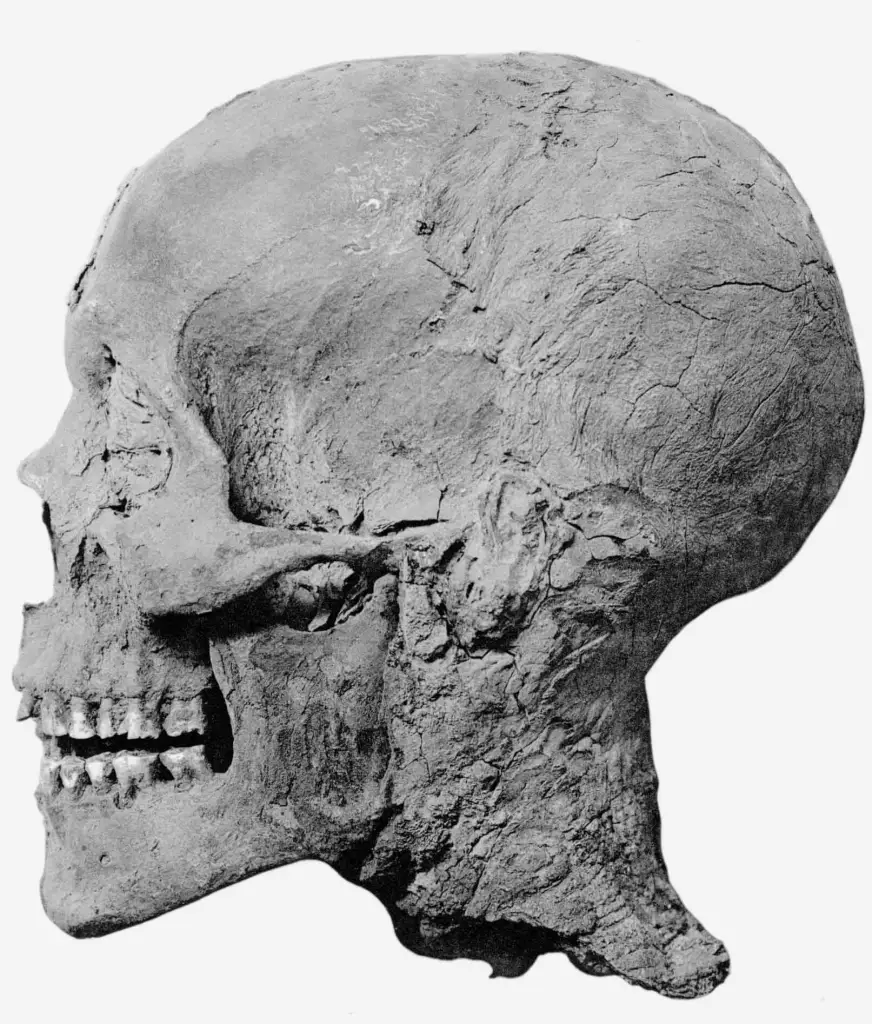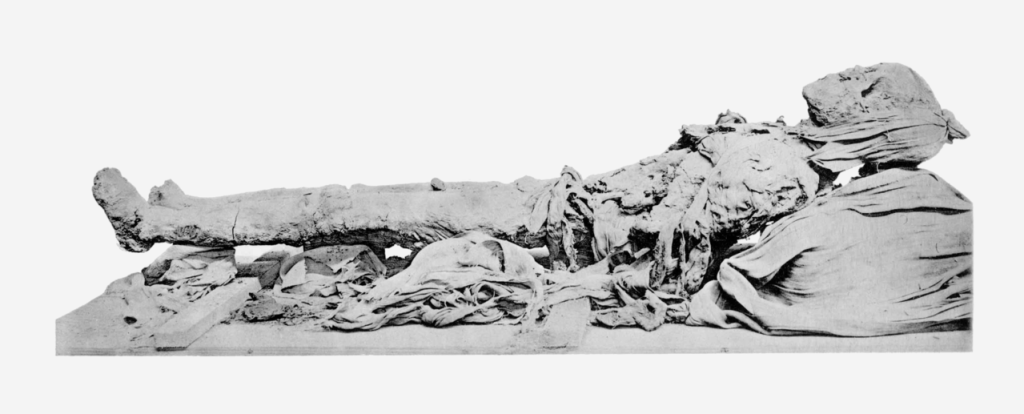In the early 20th century, a remarkable photograph taken by Grafton Elliot Smith in 1912 captured the mummified skull of Amenhotep III. This ancient Egyptian king, originally buried in WV22 in the Valley of the Kings, was moved in antiquity to Tomb KV35, the resting place of Amenhotep II. During the Third Intermediate Period, Egyptian priests used KV35 as a royal “mummy” cache to protect the deceased from tomb robberies. They consolidated royal mummies from various reigns into this single, secure location.

Despite the less-than-ideal preservation of Amenhotep III’s mummy, which includes both his skull and body, modern scientific analysis provides valuable insights into his life and death. Amenhotep III is believed to have died around the age of 50, consistent with Grafton Elliot Smith’s estimation from over a century ago, which placed the king’s age at death between 40 and 50 years.

Examining the king’s skull reveals minimal remaining soft tissue and a few missing teeth. Interestingly, a tooth was discovered in the oropharynx of the mummy, suggesting it was likely dislodged during the mummification process rather than lost during the king’s lifetime. Despite this, the condition of Amenhotep III’s teeth reflects the natural aging and decay expected of someone his age. Additionally, “osteoarthritic bony growths” and multiple enthesopathies were found on his joints, particularly in the lower limbs. Experts suggest these signs may indicate Diffuse Idiopathic Skeletal Hyperostosis (DISH).

Amenhotep III now rests in the National Museum of Egyptian Civilization after being moved from the Egyptian Museum, Cairo, in April 2021.
The mummification of Amenhotep III showcases the techniques of the 18th Dynasty. His eye sockets were filled with atrophic eye globes, linen, and resin, while his torso was packed with resin-soaked linens. However, his heart was notably absent, and no discernible cause of death could be identified. The injuries observed on the mummy, such as broken bones, occurred post-mortem.
Through the lens of Grafton Elliot Smith’s camera and the meticulous study of modern scientists, the story of Amenhotep III’s life, death, and preservation unfolds, offering a glimpse into the ancient past and the efforts taken to protect the legacy of Egyptian royalty.
Source: https://egypt-museum.com/mummified-skull-of-amenhotep-iii/



